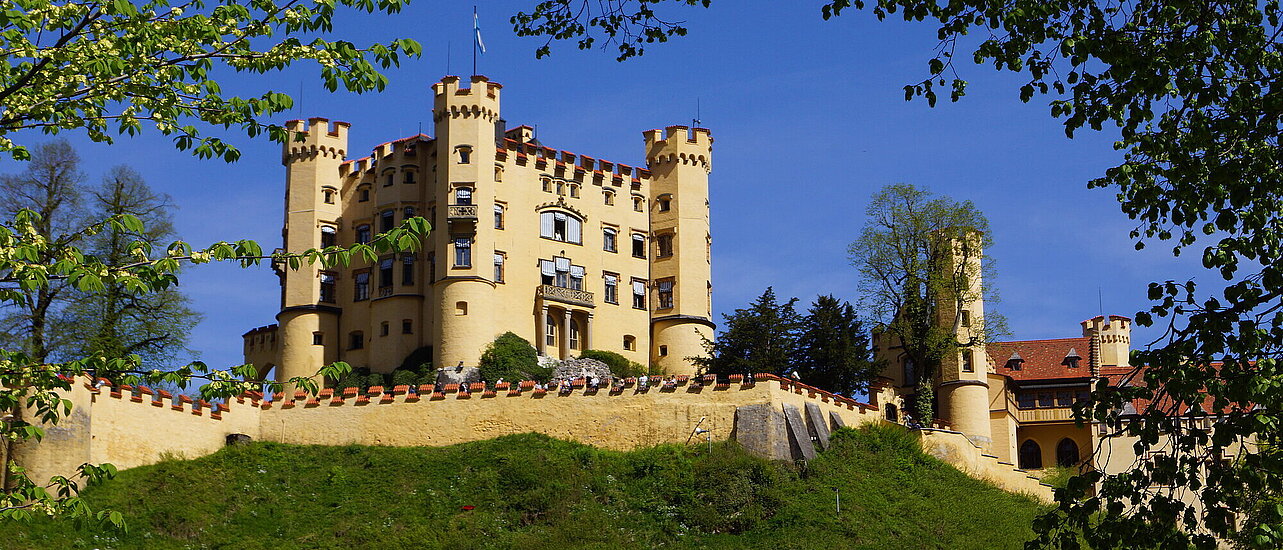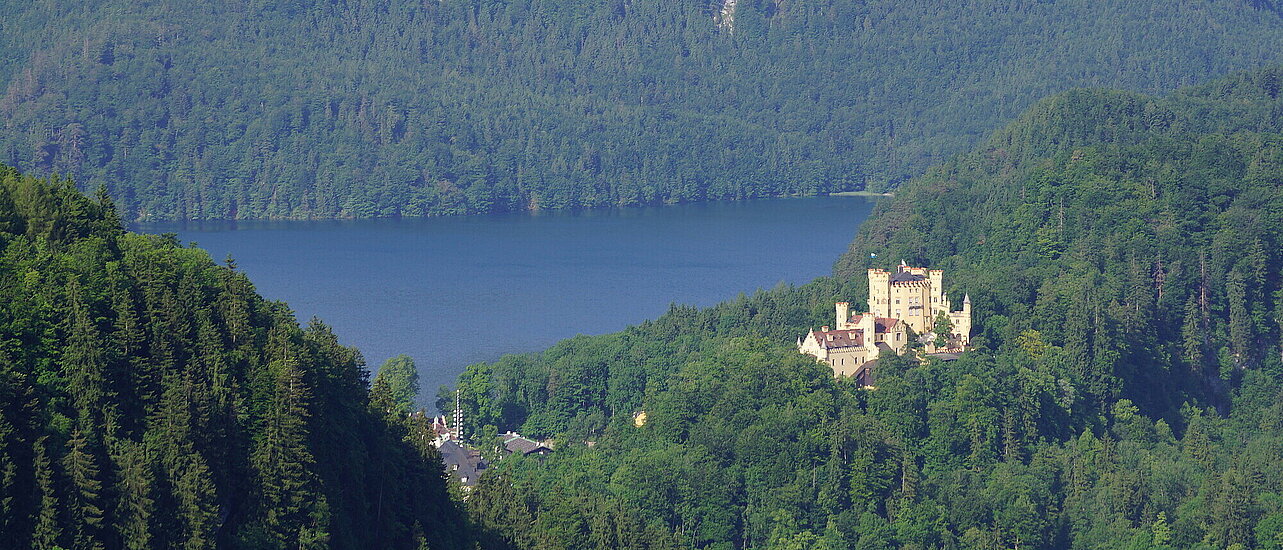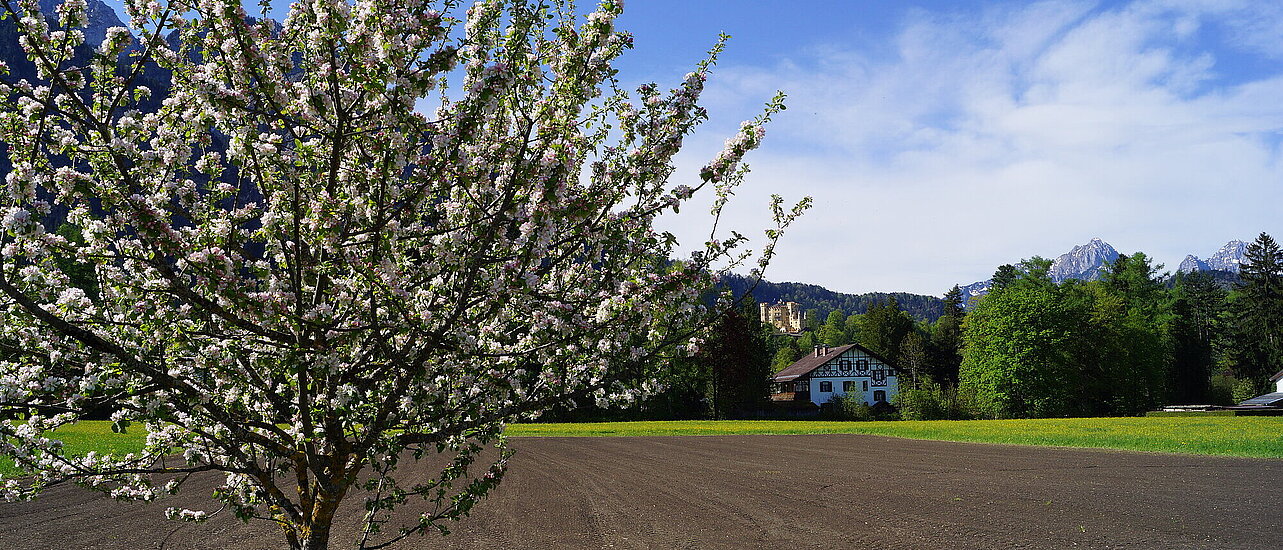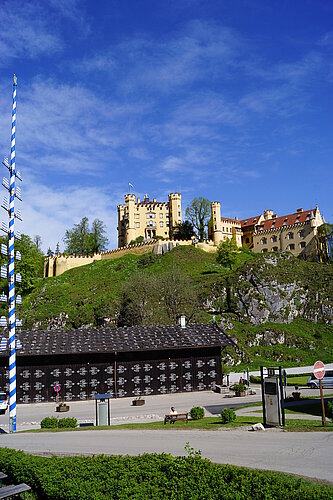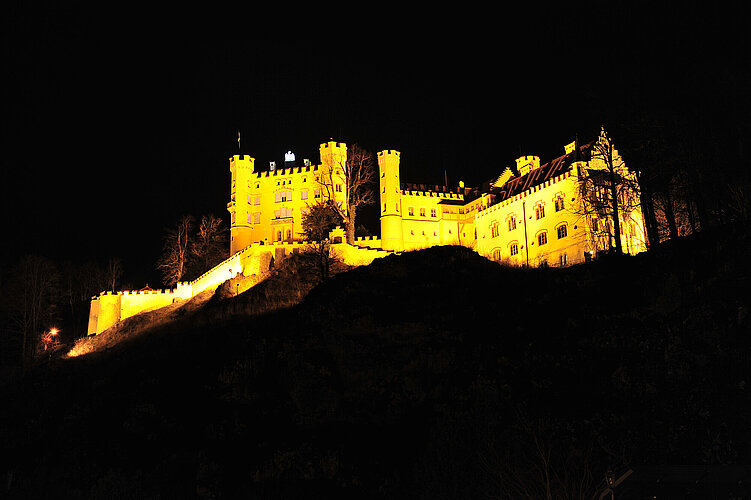- en.schwangau.de
- Sightseeing
- Hohenschwangau Castle
Hohenschwangau Castle
Where young King Ludwig II spent his childhood
The castle was dated back to the 12th century, home to the knights of Schwangau. However, over the centuries, it was badly damaged.
In 1832, Crown Prince Maximilian, who became the father of King Ludwig II, acquired the castle. It was totally rebuilt and took a duration of 5 years to complete. He and his family used the castle during the summer and as a hunting residence.
After the demise of his father, King Ludwig II took over the castle and spent much of his time there.
Visitor information: opening times, tickets, notes
Tickets and opening hours
Tickets for the Castles Neuschwanstein and Hohenschwangau and the Museum of the Bavarian Kings are available at the Ticket Center Hohenschwangau (also Reservations).
Ticket sales times for the castles
Summer: april 1 - october 15
monday to sunday 8:00 a.m. - 4:00 p.m.
guided tours 09:00 a.m. - 5:00 p.m.
Winter: 16th october - march 31
monday to sunday 8:30 a.m. - 3:00 p.m.
guided tours 10:00 a.m. - 4:00 p.m.
Guided tours
Hohenschwangau Castle admission ticket includes a guided tour. It takes approximately about half hour tour in either German, English or Audio guided. Tickets can be purchased at the Ticket Center in Hohenschwangau. Please go directly to the reservation line for your ticket.
Accessibility?
There are about 200 steps in the castle, no elevator!
Can my dog come with me into the castle?
Dogs and pets are not permissible.
May I take pictures in the castle?
No photography allowed
Interactive map (Parking, Tickets, Buses, Horse carriages, free WiFi)
The construction of Hohenschwangau Castle
From 1833 to 1837 Crown Prince Maximilian rebuilt the medieval Schwanstein Castle into a new Gothic style of Hohenschwangau Castle. The external appearance was inspired by the medieval castle.
The interior from the 19th century is still preserved until today. Each room of the royal apartments is equipped with murals, which were designed by Moritz von Schwind and Ludwig Lindenschmidt (the elder).

